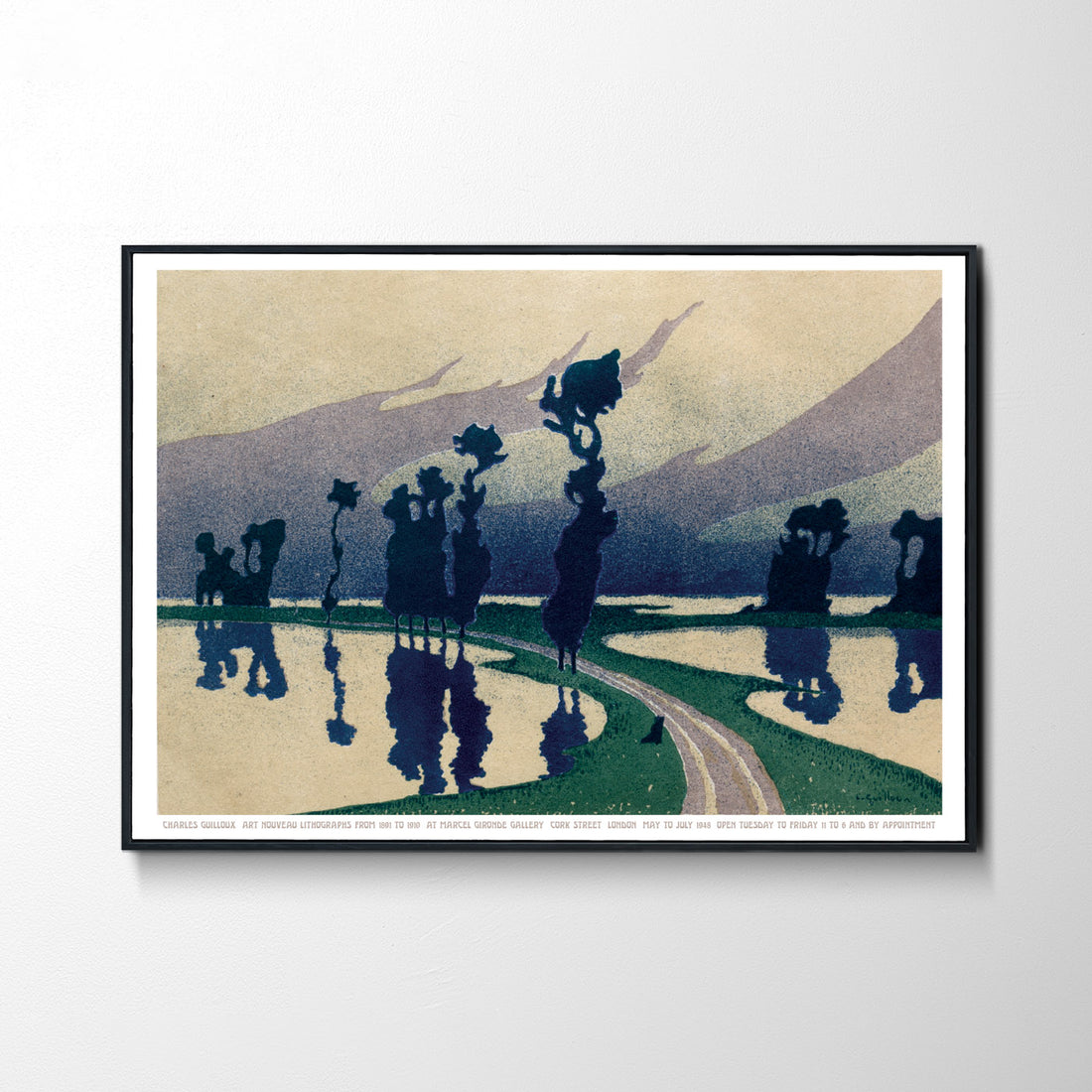
Five Things To Know About Art Nouveau
Share
Art Nouveau is a hugely attractive visual style that is appreciated by many, many people around the world today. It’s especially suitable as wall art in the home because of its beautifully laid-back and organic nature. But what is it about the style that makes it so important? Here are five things to get you up to speed with the slowed-down world of Art Nouveau.
Art Nouveau emerged as an international art movement in the late 19th century and had its heyday between 1890 and 1910. It started as a reaction against the more uptight Victorian style and the academic art traditions of the time, and instead embraced a more decorative and modern aesthetic. The movement was influenced by a variety of sources, including Japanese art, the Arts and Crafts movement, and the work of William Morris.
Art Nouveau painting and graphic design placed a strong emphasis on decorative elements, with artists striving to create works that were both beautiful and functional. This was because the style was a response to the rise of industrialisation and machine-made goods, and sought to bring back the beauty of handcrafted design. So even where there are right-angles and framing structures in Art Nouveau art, it’s clear that these were created by a human hand rather than a machine.
One of the most important figures associated with Art Nouveau was the Austrian painter Gustav Klimt. He was a leading member of the Vienna Secession, a group of artists who broke away from the traditional academic art establishment in Austria and formed their own collective. The Vienna Secession was known for promoting unconventional, decorative styles that incorporated elements of modernism and symbolism. So Klimt’s paintings, with their jewel-like patterning and long, luxurious lines, fit right in to Art Nouveau’s intention to emphasise the decorative element in visual art over the more ‘realistic’ side of things.
Another important aspect of Art Nouveau was its impact on advertising and product packaging. Many companies around this time – and since – adopted the ornamental style to promote their products, creating eye-catching and unique designs that set them apart from the competition. You can see this particularly in some of the posters on our website, where the artist has gone beyond merely depicting the product or service and has instead constructed an entire decorative flamboyant visual language around it, to help it stand out.
With its emphasis on nature, organic forms, long fluid lines and the use of new materials and techniques, Art Nouveau had a lasting impact on the art of the 20th century. Many artists and designers were inspired by its decorative style and incorporated elements of Art Nouveau into their own works. Art Nouveau also influenced Art Deco, which emerged in the 1920s and became a major style of the 20th century. The flowing lines and curved shapes characteristic of Art Nouveau can also be seen in the work of many Art Deco artists, as well as in various modernist movements that emerged in the early 20th century.
So now that you know why Art Nouveau is so important in the history of art and design, why not have a look through our entire range and treat yourself!






